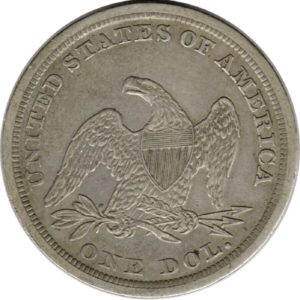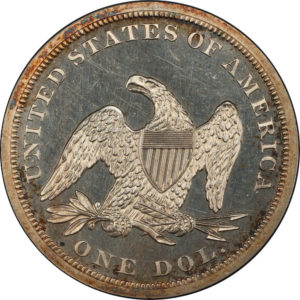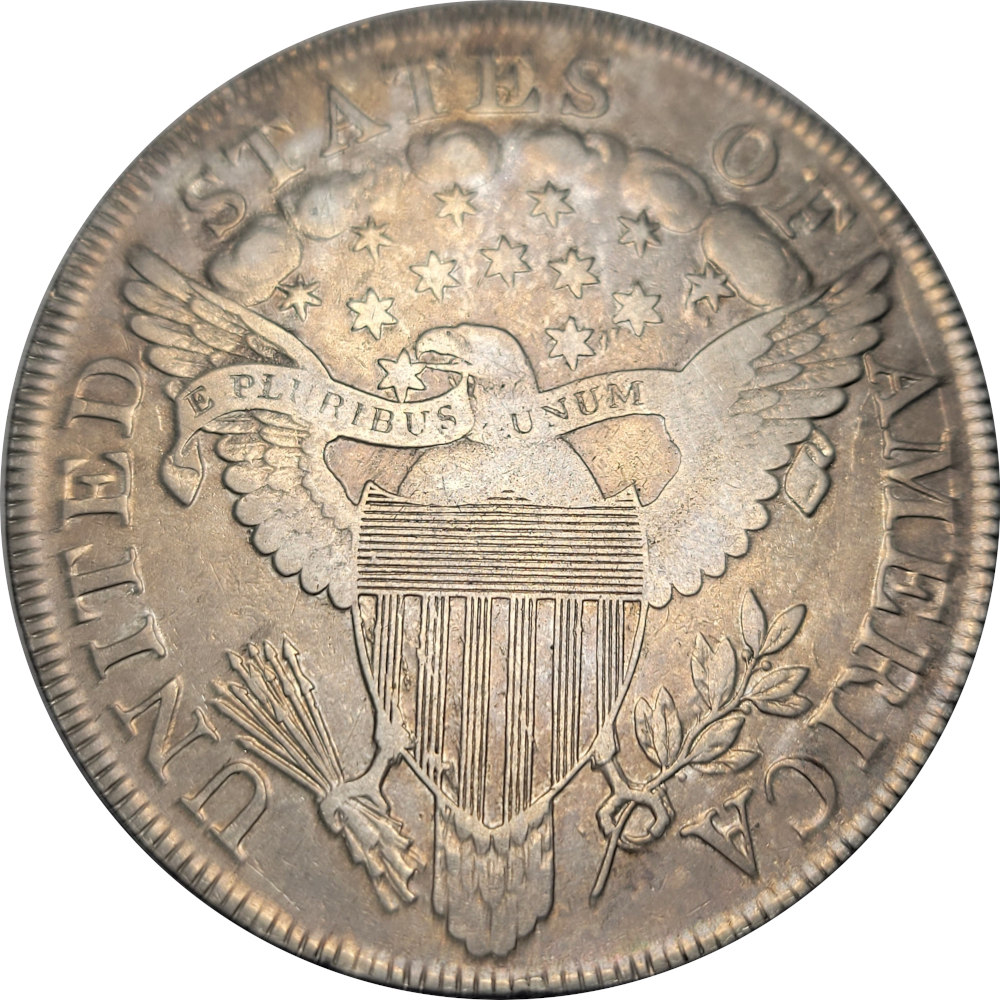1896 $1 Bryan Dollar S-17 HK-786.
1896 Bryan Coin Silver Dollar 52mm. Attractively toned. H-K 786 R-5. Attractive old antique silver and blue toning throughout. The strike is bold and the political message stated has only grown more poignant today. The value of gold continues to rise in comparison to silver. Rev. Uniface.
From Wikipedia: Bryan Money is a term used by numismatists to refer to tokens and medals associated with William Jennings Bryan’s platform during the United States presidential elections of 1896 and 1900. Bryan’s platform advocated for the reinstatement of silver currency in the United States economy as part of the short-lived Silver Republican Party.
In the wake of the panic of 1893 came the dawn of the upcoming presidential campaign. Farm prices collapsed, banks failed, unemployment was at 20%, and the economy was stalled. The money supply was backed by gold. The government could not print more greenbacks without gold backing. The protectionists wanted high tariffs to keep out foreign goods and create jobs in the United States.
The Populist Party’s remedy was to substantially increase the money supply by adopting a dual monetary standard. With the acceptance of silver as an additional backer, more money could be printed. The United States had vast silver deposits in reserve as well as in the ground, waiting to be mined. The working man supported this addition of silver. These issues polarized the people of the west and south on one side and the northeast on the other, farmer against the industrialist, the well-to-do against the lower economic classes.
Candidates need an issue or platform upon which to sell themselves. For the elections of 1896 and 1900, Bryan chose the issue of the standard by which the government backed its currency – either with just gold or his choice of both silver and gold. Supported by both the National Silver Party and the Populist Party, Bryan, a Democrat from Nebraska, ran unsuccessfully against William McKinley of Ohio in both those races.
The Silverites referred to the inscription used on the edge of the first silver dollars, 1794-1804, “HUNDRED CENTS ONE DOLLAR OR UNIT” as evidence that the intentions were to have the silver dollar a unit of measure. Bryan expounded the free coinage of silver using the ratio, 16 oz. of silver = 1 oz. of gold. Free coinage of silver means a person could bring silver ingots to the United States Mint and have them coined. For example, $0.53 of silver would produce a silver dollar, which is what the Morgan dollar (1878-1921) contained. If the government issued dollars containing 100 cents worth of silver, they would have been very large and cumbersome.












